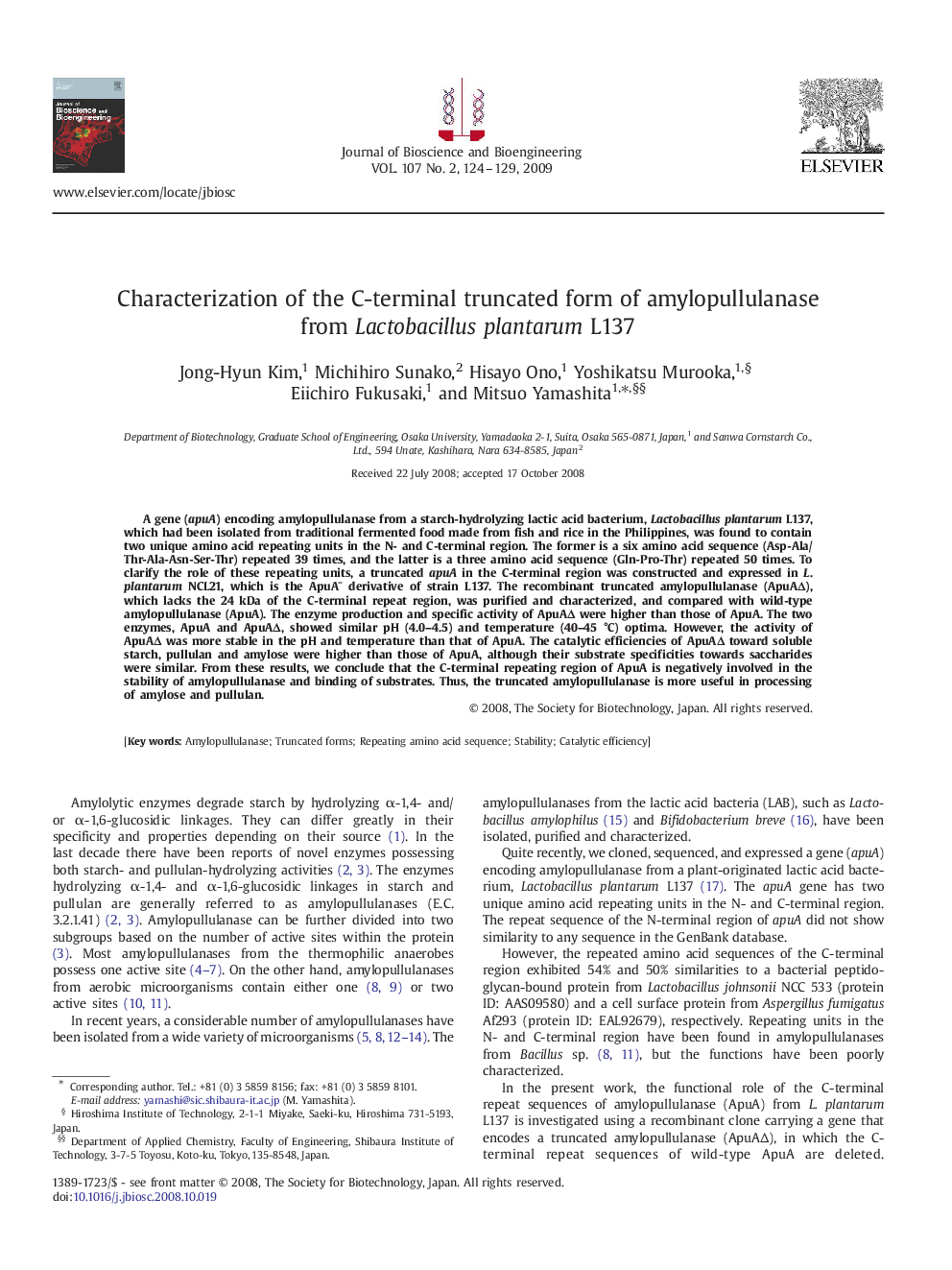| Article ID | Journal | Published Year | Pages | File Type |
|---|---|---|---|---|
| 21418 | Journal of Bioscience and Bioengineering | 2009 | 6 Pages |
A gene (apuA) encoding amylopullulanase from a starch-hydrolyzing lactic acid bacterium, Lactobacillus plantarum L137, which had been isolated from traditional fermented food made from fish and rice in the Philippines, was found to contain two unique amino acid repeating units in the N- and C-terminal region. The former is a six amino acid sequence (Asp-Ala/Thr-Ala-Asn-Ser-Thr) repeated 39 times, and the latter is a three amino acid sequence (Gln-Pro-Thr) repeated 50 times. To clarify the role of these repeating units, a truncated apuA in the C-terminal region was constructed and expressed in L. plantarum NCL21, which is the ApuA− derivative of strain L137. The recombinant truncated amylopullulanase (ApuAΔ), which lacks the 24 kDa of the C-terminal repeat region, was purified and characterized, and compared with wild-type amylopullulanase (ApuA). The enzyme production and specific activity of ApuAΔ were higher than those of ApuA. The two enzymes, ApuA and ApuAΔ, showed similar pH (4.0–4.5) and temperature (40–45 °C) optima. However, the activity of ApuAΔ was more stable in the pH and temperature than that of ApuA. The catalytic efficiencies of ApuAΔ toward soluble starch, pullulan and amylose were higher than those of ApuA, although their substrate specificities towards saccharides were similar. From these results, we conclude that the C-terminal repeating region of ApuA is negatively involved in the stability of amylopullulanase and binding of substrates. Thus, the truncated amylopullulanase is more useful in processing of amylose and pullulan.
